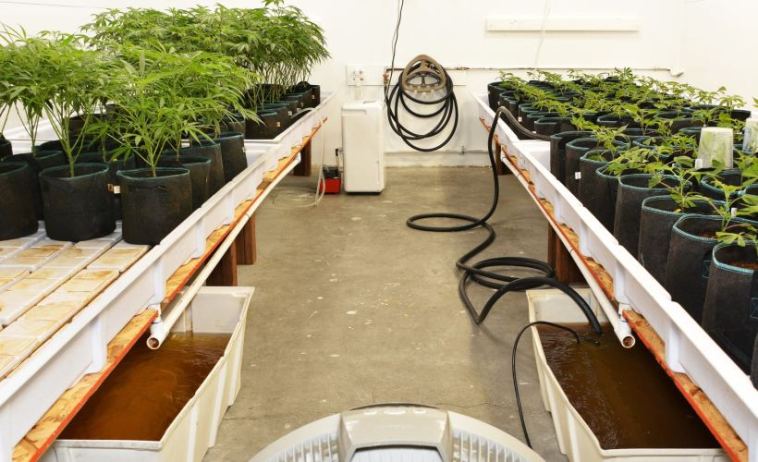- Like
- SHARE
- Digg
- Del
- Tumblr
- VKontakte
- Flattr
- Buffer
- Love This
- Save
- Odnoklassniki
- Meneame
- Blogger
- Amazon
- Yahoo Mail
- Gmail
- AOL
- Newsvine
- HackerNews
- Evernote
- MySpace
- Mail.ru
- Viadeo
- Line
- Comments
- Yummly
- SMS
- Viber
- Telegram
- JOIN
- Skype
- Facebook Messenger
- Kakao
- LiveJournal
- Yammer
- Edgar
- Fintel
- Mix
- Instapaper
- Copy Link
Introduction
Autoflowers are an increasingly popular choice for both indoor and outdoor growers due to their shorter growing period and ease of care.
However, getting the most out of your autoflowering plants requires a certain level of knowledge and experience.
In this article, we’ll cover the essential tips and tricks to help you maximize your yields and achieve high-quality buds from your autoflowering plants.
From proper growing conditions and nutrient management to training techniques and pest control, read on to find out how to get the most out of your autoflowering cannabis plants.
What Kind of Soil is Best for Autoflowers?
The best soil to use for autoflowering cannabis plants is a light and airy mix that provides proper drainage, water retention, and sufficient nutrient availability. Autoflowers have a short lifespan, so they need a soil mix that will support their rapid growth and development. Here are some of the key elements to look for when choosing the best soil for autoflowers:
Drainage:
A soil mix that drains well is crucial for autoflowers to prevent root rot and other issues related to overwatering.
Nutrient Content:
Autoflowers have a fast metabolism and need a balanced supply of nutrients throughout their growth cycle. Look for a soil mix that contains a moderate level of organic matter, such as compost or worm castings, to provide slow-release nutrition.
Aeration:
Good soil structure is important for root development and overall plant health. A mix that contains perlite or vermiculite will help to promote air exchange, oxygenation, and water retention.
pH:
Autoflowers grow best in slightly acidic soil with a pH between 6.0 and 7.0. Regular testing and adjusting of soil pH can help to maintain optimal growing conditions.
In summary, the best soil for autoflowering cannabis is a mix that offers good drainage, a balanced nutrient supply, proper aeration, and a slightly acidic pH. Choose a high-quality soil mix specifically formulated for cannabis, or make your own blend using quality ingredients like compost, perlite, vermiculite, and peat moss.
What Lighting Should You Use for Autoflowers?
HID and CFL grow lights will work well, but if you want to get the most out of your cannabis plants the best lighting to use is full-spectrum LED grow lights. The light cycle for autoflower strains is an important factor in their growth and development, as they require a consistent light regimen to flower and mature properly. Here are some key considerations for choosing the best lighting and light cycle for autoflowers:
Light Spectrum:
Autoflowers grow best with a full-spectrum LED light that provides a range of wavelengths, including both blue and red light. Blue light promotes vegetative growth, while red light promotes flowering and fruiting.
Light Intensity:
Autoflowers require a high light intensity to support their rapid growth and development. Look for LED lights with a high PAR (photosynthetically active radiation) output and adjust the light height to maintain an appropriate distance from the plants.
Light Cycle:
Autoflowers typically have a light cycle of 18 hours of light and 6 hours of darkness. Maintaining a consistent light cycle is important for the plants to flower and mature properly, so consider using a timer or automated system to ensure reliable lighting.
Light Duration:
Autoflowers typically require a total of 60-70 days of flowering to reach maturity, during which they should receive 18-20 hours of light per day. Gradually reducing the light duration as the plants approach maturity can help to increase trichome development and improve the quality of the final buds.
In conclusion, choosing the right lighting and light cycle is crucial for achieving the best results with autoflowering cannabis plants. Use high-quality, full-spectrum LED lights and maintain a consistent light cycle of 18-20 hours of light per day to support healthy growth and high-quality yields.
How to Increase Yield with Autoflowers
Plant training is an effective way to increase yields and improve the quality of buds in autoflowering cannabis plants. The best methods of training autoflowers are those that promote healthy growth and encourage the development of multiple colas, or main flower clusters whilst causing the least stress. Here are some of the most effective training techniques to consider:
Low-Stress Training (LST):
LST involves gently bending and tying down the main stem or branches to encourage the growth of new shoots and branches. This technique is best used early in the growth cycle, before the plant has begun to flower.
ScrOG training:
Screen of Green (SCROG) is a popular plant training method that involves using a screen or mesh to guide the growth of cannabis plants and increase yields. This technique can be effective for autoflowering strains, as it allows for multiple colas to develop and provides maximum exposure to light. To use SCROG for autoflowers, start early in the growth cycle, carefully train the plants through the screen, and adjust the height of the screen as the plants grow. This will promote even light distribution and help to achieve maximum yields from your autoflowering plants.
Supercropping:
Supercropping involves gently bending and pinching branches to damage the inner tissues and stimulate the growth of new shoots. This technique is best used later in the growth cycle, after the plant has begun to flower.
SOG training:
Sea of Green (SOG) is a growing technique that involves planting multiple small cannabis plants close together and allowing them to grow into a dense canopy of buds. This technique can be used with autoflowering strains to maximize yields and minimize the growing space required. To use SOG for autoflowers, plant multiple small seedlings in close proximity, provide plenty of light and nutrients, and maintain proper humidity levels. With proper care, SOG can help to achieve high-quality buds and substantial yields from your autoflowering cannabis plants.
In summary, the best plant training methods for autoflowers are those that promote the development of buds but cause as little stress as possible. Autoflowers have much shorter vegetative and flowering stages than photoperiods, and while it is possible to use some high stress training methods with autoflowers, it is not recommended.
What Nutrients Should I Give to My Autoflowers?
The nutrient feeding schedule for autoflowering cannabis plants is an important factor in their growth and development, as they require a consistent supply of nutrients to support their rapid growth cycle. The three vital macro nutrients that you will find in any cannabis feed are nitrogen phosphorus and potassium, together these are abbreviated to NPK. These are required in varying measurements throughout a plants life cycle and will be displayed on the packages of most plant foods as something like 2-4-2 as a representation of the ratios of each nutrient. Here is a basic nutrient feeding schedule to consider:
Germination/Seedling stage:
During the germination and seedling stage do not provide any nutrients. Cannabis plants are delicate at this stage and nutrients will most likely kill them. Water them with plain pH’d water until it has produced at least 2 sets of leaves.
Vegetative Stage:
During the first 2-3 weeks of growth, provide a balanced nutrient solution with a higher proportion of nitrogen (N) to support vegetative growth.
Early Flowering Stage:
As the plants begin to flower, reduce the amount of nitrogen and increase the proportion of phosphorus (P) and potassium (K) to support flowering and fruiting.
Late Flowering Stage:
During the final 2-3 weeks of flowering, reduce the amount of nutrients and flush the soil or growing medium with plain water to remove excess nutrients and improve the taste and aroma of the final buds.
Flushing:
Before harvesting, it’s recommended to flush the soil or growing medium for several days to remove excess nutrients and reduce the risk of nutrient burn.
It’s important to monitor the plants regularly and adjust the nutrient regimen as needed to support healthy growth and high-quality yields. Keep in mind that autoflowers have a short lifespan and require careful management to achieve optimal results. Over-fertilization can lead to nutrient burn and reduced yields, so be mindful of the nutrient levels and adjust the feeding schedule as necessary.


